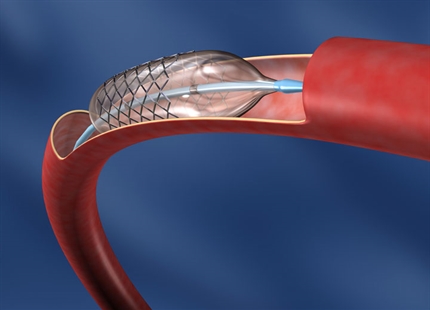
Contact us today to learn more about humidity for your eyes and skin...

Why Humidify... For your Eyes and Skin
Dryness afflicts the eyes, skin and mucous membranes above all. It causes complaints such as stinging eyes, blinking, blurry vision, skin itchiness, dry-skin eczema, nosebleeds and dry coughing.
The eyes, skin and the mucous membranes of the airways are in permanent contact with the ambient air. They form an important barrier between the insides of the body and the microbes and pathogens floating in the air. The dramatically fluctuating moisture content of the air presents significant challenges in relation to its adaptability. Dryness afflicts the eyes, skin and mucous membranes above all. It causes complaints such as stinging eyes, blinking, blurry vision, skin itchiness, dry-skin eczema, nosebleeds and dry coughing.
Dry eyes
As well as being the windows to the soul, the eyes are also the windows to the world around us. Tear fluid and the blinks of our eyelids ensure that the “window” stays clean and clear. They prevent against drying out, infection and injury. The eyelid covers the cornea during sleep and thus prevents it from drying out. The eyelid blinks, that happens as a reflex preventing the penetration of larger floating particles, especially dust, but also foreign bodies and insects. The tear fluid film keeps the eye moist and protects it from infections through bacteria and viruses with the antimicrobial enzyme lysozyme.
Dry air leads to the increased evaporation of tear fluid [1]. The tear fluid can break down and the cornea can become painfully damaged as a result. Dry, itching, irritated and red eyes compromise screen work in particular and lead to significant performance restrictions. Blurry vision demands that work be interrupted and, as a result of neck tension, leads to dizziness and headaches. Eye specialists therefore warn against underestimating dry eyes as a clinical picture [2]. In tests carried out in a climatic chamber [3] at relative air humidities of 30% and 10%, the trial subjects experienced complaints after just four hours. “Ideally the air humidity should be between 40 and 60 percent, at an ambient temperature of between 19 and 22 degrees Celsius,” a current study on the significance of air humidity in the office confirms [4]. The study also shows that an increase of the relative air humidity has a positive impact on dry eyes: “If air humidification is being used, the complaints are reduced by almost half.”
Rough, dry and flaky skin and eczema
The skin of an adult measures a surface area of almost two square meters. It prevents pathogens from penetrating the body. Persistent dryness causes rough, chapped or cracked skin. This weakens the skin’s barrier function. Bacteria, fungi and dirt can then get through. A dissertation [5] investigated the influence of air humidity on the roughness of skin in patients with neurodermatitis, an increasingly common, chronic skin condition with severe skin itchiness. Through a relative air humidity of 30%, the skin became rougher after just three hours, and not only in previously ill test subjects, but also in those who were healthy.
In dry, heated winter air, the frequency of the skin problems described above significantly increases. Pleasant air humidity of between 40 and 60 percent and humidifying, oily skin ointments can prevent complaints and eczema-type skin conditions effectively.
Sources:
[1] DNB Deutsches Netzwerk Büro e.V. [German Office Network]: “Zu trockene Luft im Büro! Welchen Einfluss hat die Luftfeuchte auf die Gesundheit am Arbeitsplatz?” [Excessively dry air in the office: What is the influence of air humidity on health in the workplace?], 2015
[2] BVA Berufsverband der Augenärzte Deutschlands e.V. [Association of Ophthalmologists of Germany]: “Das trockene Auge — eine ernstzunehmende Krankheit” [Dry eye — an illness to be taken seriously], 2007
[3] Laviana et al: “Einfluss der relativen Luftfeuchte auf das menschliche Auge direkt und beim Tragen von Kontaktlinsen” [The influence of relative humidity on the human eye directly and when wearing contact lenses], 1988
[4] Jurecic, Rief — Fraunhofer Institut Arbeitswirtschaft und Organisation IAO [Fraunhofer Institute for Industrial Engineering]: “Luftfeuchtigkeit am Büroarbeitsplatz” [Air humidity in the office workplace], 2014
[5] Spiegel: “Einfluss der relativen Luftfeuchte auf die Hautrauigkeit bei Patienten mit atopischen Ekzem” [The influence of relative air humidity on skin roughness in patients with atopic eczema], 1998
Benefits of humidification for your Eyes and Skin include:
- Reduces the risk of tear fluid, which can damage your cornea.
- Reduces risk of nose bleeds, eczema, dry coughs, blinking, blurry vision and skin itchiness.
- Minimizes the risk of disease
- Improves working environment for people


Why Humidify... For Pharmaceutical Manufacturing

Why Humidify... For Data Centers

Why Humidify... For Schools

Why Humidify... For Yoga Studios

Spray booth humidification

Why Humidify... For Textile Manufacturing

Why Humidify... For Composites

Why Humidify for... Life Sciences

Medical device manufacturing humidification

